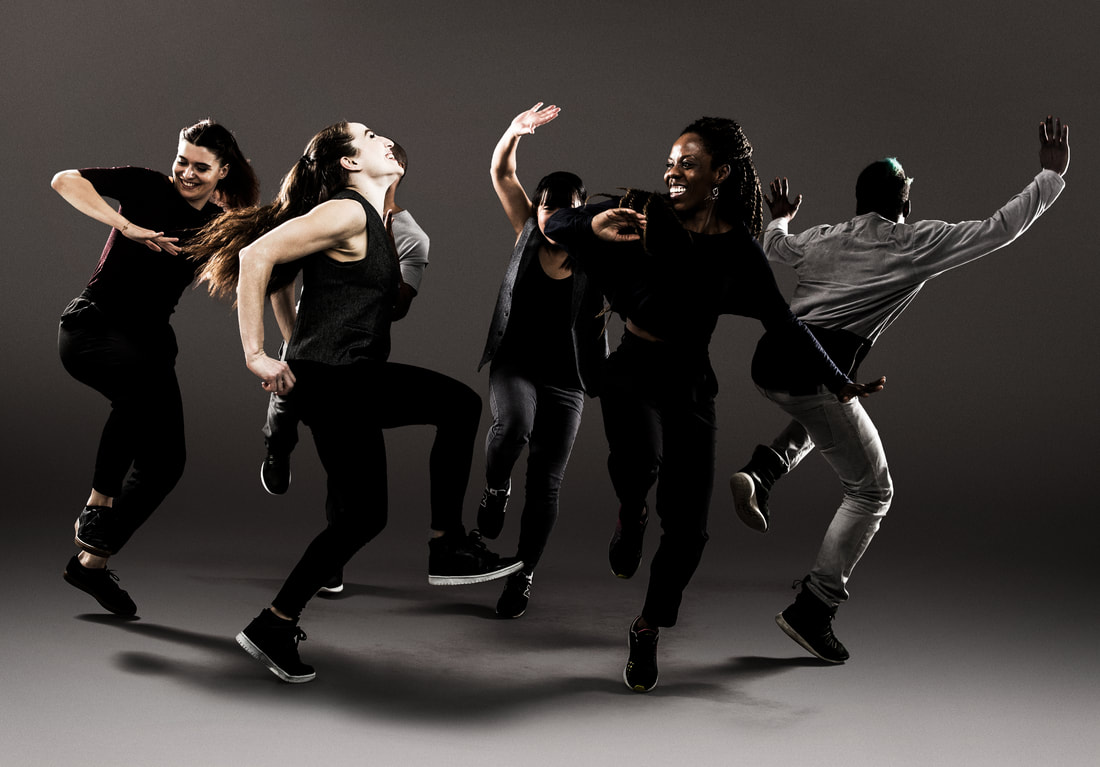|
Akram Khan performs in his latest and last solo, "Xenos." (DanceTabs) No dance artist can seize the imagination like Akram Khan. The dancer and choreographer startles his audience and then captures them, pulling them along on a journey that, in the case of “Xenos,” is both frightening and fascinating.
And though there were times, sitting the ’62 Center for Theatre and Dance at Williams College on Thursday, that I shook internally with fear at the unfolding of “Xenos,” I could not turn away. I was riveted every second by this Akram Khan Company production. In more than four decades of watching dance, I have not seen another solo that could do that – especially for more than an hour. “Xenos” is a powerful work. It’s intense and gritty, delving into the horrors war wrecks – mainly death and destruction, starvation and loneliness. Khan, along with his artistic and musical collaborators, created a blistering dystopia that haunts the mind well after the curtain comes down. As I write this now, I’m still tearing up. “Xenos” is beautifully crafted. The evening-length piece, inspired by the ordeal of a colonial Indian soldier during World War I, began before the audience settled in their seats. Percussionist BC Manjunath and vocalist Aditya Prakash were seated on pillows on stage performing Indian music. A string of bare light bulbs hung over them as sounds of bomb blasts crashed and lights flicked. But the two played and sang on, unfazed and numbed to war. Then Khan lumbered from the wings, struggling to tow a massive rope. He stumbled and fell on a small table that collapsed. As he struggled to regain his footing, the lights went black. Khan lit a match and we heard a voice from beyond say, “This is not war, this is the ending of the world.” Then, everything on stage, chairs, rugs, pillows, table, get drawn up and away, seemingly falling off of a cliff. Khan was alone, his only companion, a pile of dirt that he protected and nurtured – a precious and pathetic claim to territory that throughout the piece got scattered. This was his pilgrimage through the bloodshed. Khan, who combines Indian classical dance Kathak with contemporary dance, is a potent performer because of his honesty. As its creator, he is deeply invested in the work, which makes the audience invested too. When we heard the dogs barking, the reading of the names of the dead, the whistle that forced Khan to snap to attention or saw the chains that imprisoned his feet and hands, we too were shattered. The piece was built on these moments that continually sparked meaningful metaphors that resonate in today's unstable world. The dark and tense atmosphere was fed by the stellar creative team – dramaturg Ruth Little, playwright Jordan Tannahill, designer Mirella Weingarten, lighting designer Michael Hulls, costume designer Kimie Nakano and composer Vincenzo Lamagna whose music was played with intense focus by Manjunath and Prakash as well as bassist Nina Harries, violinist Clarice Rarity and saxophonist Tamar Osborn. I don’t usually list the full creative team, but “Xenos” is perfection. Obviously, its creators were devoted to the work, nurturing it to the pinnacle of its power. My only regret is that this is Khan’s last solo. While I weep over the years I did not see him dance, I’m grateful I saw him perform before he steps off the stage for good. I now look forward to what he creates in years to come. It’s no exaggeration to say, he’s one of the most important voices in dance today.
2 Comments
Ephrat Asherie Dance performed "Odeon," which was inspired by the music of Ernesto Nazareth. (Photo by Matthew Murphy) There is joy in Ephrat Asherie Dance. That was clear on Saturday night at the University at Albany where the sneaker-shod six-member ensemble imbued themselves with the rhythms of Brazilian composer Ernesto Nazareth’s music in “Odeon.” Choreographed by Artistic Director Ephrat “Bounce” Asherie, the piece had an old-time musical flavor, fueled by the dancer’s theatrical couplings and campy winks and nods. Yet it also had an edge, because these six dancers, including Asherie herself, are skilled in street, club and African dance. Combined with showy personalities and Nazareth’s music that swung from classical piano to heated solo drums, “Odeon” erupted with wit and good-hearted fun. It started off with Manon Bal and Matthew “Megawatt” West establishing the beat with an elaborate game of patty cake for hands and feet. Warmed up, the audience was then taken on a journey where they rode the music with everything from ballroom to break-dancing. It all served to inspire smiles – among themselves and the audience. This glee was wrought, in part, by Asherie’s giving her dancers free-reign to show off their individuality. The choreographer did create some symmetrical passages where dancers matched their partner’s moves. But she also acknowledged their strengths by allowing each, including herself, time in the spotlight. Ousmane “Omari Mizrah” Wiles won over the crowd with his wild-armed dance and later his African-influenced solo. Wiles came off as a diva, one that the sold-out crowd adored. West, on the other hand, was smooth and cool. He was adept at busting the b-boy moves as well as guiding his partner through a tiny tango or a simmering samba. All the women, Asherie, Bal, Teena Marie Custer and Val “Ms. Vee” Ho, were also versatile. But Asherie was the one who caught my eye. Her attack was sharp, focused yet slightly flirtatious. She was all in and enticed the others to follow. Certainly, the music gave the dancers plenty of leeway. Nazareth’s catalogue was classical, jazzy and popular. And Asherie upon hearing the music, as performed by her brother and pianist Ehud Asherie, knew that much could be expressed through it. I’m so glad she acted on her revelation and shared it with us. |
Wendy
|


 RSS Feed
RSS Feed
